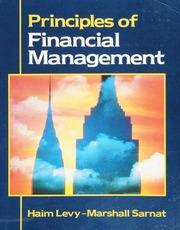Question
You chair the Board of Directors at Target Corporation. After the firm released its 2014 financial statements, you are faced with an important decision. The
You chair the Board of Directors at Target Corporation. After the firm released its 2014 financial statements, you are faced with an important decision. The first agenda item at the next board meeting is whether to retain or dismiss the companys chief executive officer. As head of the board, you will introduce this issue, state your position, and moderate the ensuing discussion. As you contemplate this important recommendation, you consider the following items about your company and its industry. Target Corporation is a Minnesota company incorporated in 1902. Target described itself in its 2014 annual report by stating, We offer our customers everyday essentials and fashionable differentiated merchandise at discounted prices. Target is the second largest discount retailer in the United States behind Walmart when measured by sales revenues, total assets, and market capitalization. Retailing is the economic sector that links the producer of products to end-use customers. It is the largest segment of the American economy. The totality of retail transactions constitutes about two-thirds of the gross domestic product (GDP) in the United States, according to U.S. Department of Commerce. Financial analysts view merchandising as a mature industry, defined by intense competition, low profit margins, and business consolidation. Numerous economic factors affect retailers. Notable among them are real changes (inflation-adjusted) in GDP, levels of disposable income, and consumer confidence. In short, people shop when they have money, and they are confident that they will have it in the future. Consequently, retailers tend to thrive during economic expansions and suffer during economic contractions. The 2007-2009 economic down turn hurt sales for all retailers. Sales have rebounded in the five years after the recession, but many analysts feel that industry performance remains sluggish. Marketers note the post-recession watchword for retail customers is value. Consumers, regardless of economic standing, want quality at a relatively low price. A recent threat to traditional bricks and mortar retailers, such as Target, has been the rise of online retailing. Firms such as Amazon have taken sales and market share away from Target, Walmart and others who primarily sell their goods at fixed locations. In addition to this general industry threat, Target has faced numerous company issues. The primary ones are an ill-fated attempt to launch stores in Canada, an extensive data breach to its customers information, and the erratic performance of its Target credit card business. More importantly, some analysts have criticized Target from losing sight of its objective as the upscale discounter; a purveyor of cheap chic, which differentiated the firm from its competitors. You turn your attention to Targets four most recent income statements, balance sheets, and statements of cash flows excerpts: 








You make a few final mental notes about the financial statements. First, Target did not report any accounts receivable in 2014. That is because Target sold its credit card business to TD Bank at the end of 2013. Second, the fiscal year end for Target and Walmart differ. Like most retailers, Target and Walmart end their fiscal years at the end of January, after the holiday selling and return season ends. In its annual reports, Target refers to its fiscal year in which the 11-month majority took place. For example, Targets 2013 annual report referred to the year started on February 1, 2013 and ended on January 31, 2014 as 2013. Walmart, on the other hand called that same fiscal year 2014. To avoid confusion in your analysis, you have recast Targets financial statements on a comparably-dated basis as those of Walmart.
Required: (1) Complete the following tables by computing the required 2013 and 2014 ratios for Target and Walmart.

 Required: (2) Decide whether Target should retain or fire its chief executive officer. Write your rationale for the recommendation that you will read to Targets Board of Directors.
Required: (2) Decide whether Target should retain or fire its chief executive officer. Write your rationale for the recommendation that you will read to Targets Board of Directors.
please answer question 2. write the rationale.
Target Corporation Income Statements (in millions of dollars) Total revenues 2011 2012 73,301 $ 69,865 67,390 47,860 22,005 16,683 5,322 866 4,456 1,527 2014 2013 Costs of sales Gross profit Operating expenses Operating income Net interest cost $ 72,596 51,160 21,436 17,207 4,229 1,126 3,103 1,132 50,568 22,733 17,362 5,371 762 4,609 1,610 45,725 21,665 16,413 5,252 757 Income before income taxes 4,495 1,575 $ 1,971 2,999$ 2,929 2,920 Income tax expense Net incomeStep by Step Solution
There are 3 Steps involved in it
Step: 1

Get Instant Access to Expert-Tailored Solutions
See step-by-step solutions with expert insights and AI powered tools for academic success
Step: 2

Step: 3

Ace Your Homework with AI
Get the answers you need in no time with our AI-driven, step-by-step assistance
Get Started


